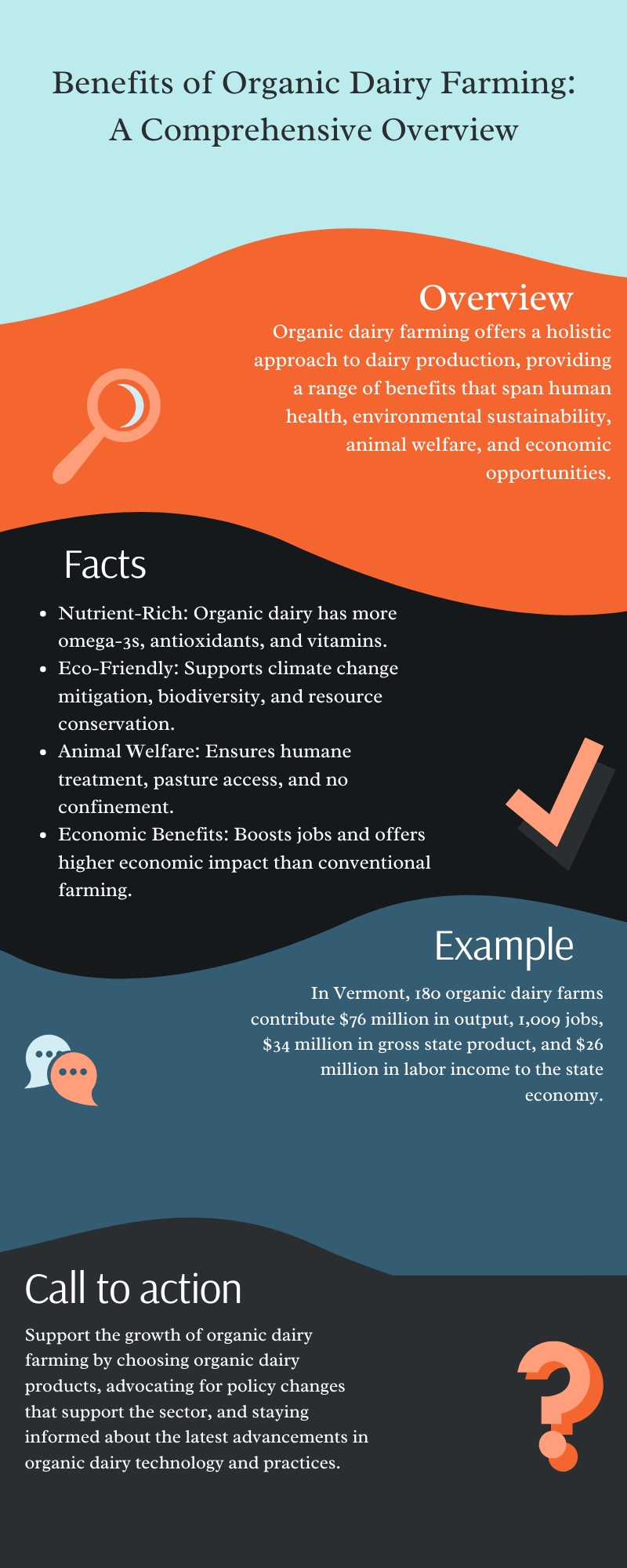In recent years, there has been a growing awareness among consumers about the impact of their food choices on their health and the environment. This heightened consciousness has led to a surging demand for organic dairy products, as people seek out healthier and more sustainable options.
Organic dairy farming is a holistic approach to producing milk and dairy goods that strictly prohibits the use of synthetic fertilizers, pesticides, genetically modified organisms (GMOs), and antibiotics.
Cows raised on organic farms are fed organic feed, have access to pasture, and are treated humanely without the use of hormones.
Key Takeaways!
- Organic dairy farming offers superior nutritional value, minimizes exposure to harmful substances, and avoids pesticide residues, benefiting human health.
- Organic dairy farming practices help mitigate climate change, preserve biodiversity, and conserve soil and water resources, reducing the environmental impact.
- Organic dairy farming prioritizes animal welfare by providing pasture access, prohibiting confinement, and ensuring the humane treatment of dairy cows.
- Organic dairy farming upholds ethical principles, including a commitment to animal welfare, transparency, fair treatment of workers, and sustainable land management.
- The organic dairy sector provides significant economic benefits, including job creation and greater economic impact compared to conventional dairy farming.
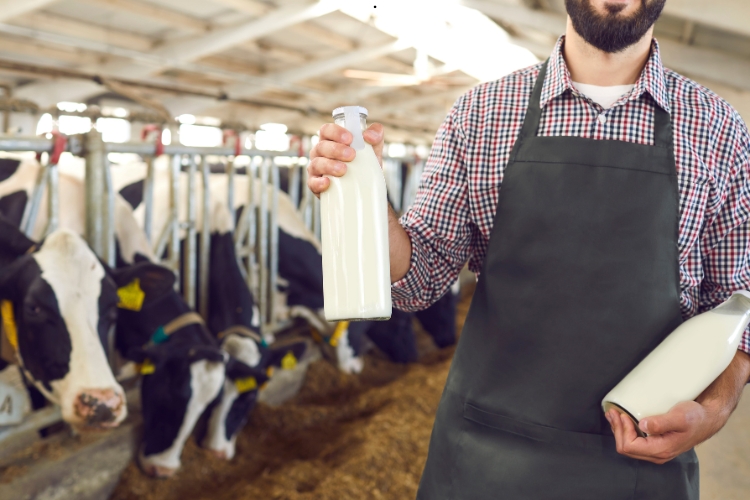
The Benefits of Organic Dairy Farming
Organic dairy farming offers a comprehensive set of benefits that span human health, environmental impact, animal welfare, ethical considerations, and economic viability. Let’s dive deeper into each of these advantages.
1. Human Health Benefits
a. Superior Nutritional Value
Studies have shown that organic dairy products may contain higher levels of beneficial nutrients compared to their conventional counterparts. This enhanced nutritional value is attributed to the cows’ organic diet, which typically includes more grass and forage.
Organic milk is richer in omega-3 fatty acids, antioxidants, and vitamins, providing a more nutrient-dense option for consumers.
b. Minimized Exposure to Harmful Substances
Organic dairy farming prohibits the use of antibiotics and synthetic hormones, which are commonly used in conventional dairy farming. Conventional dairy cows are often treated with antibiotics to prevent or treat infections, while synthetic hormones are used to increase milk production.
These substances can pose potential health risks for consumers. By choosing organic dairy products, individuals can reduce their exposure to these potentially harmful substances.
c. Avoiding Pesticide Residues
Organic dairy farming strictly prohibits the use of synthetic pesticides. Studies have shown that organic milk does not contain residues of commonly used pesticides.
Conventional milk samples, however, have been found to contain residues of several pesticides, even though the levels were below the FDA limits. By opting for organic dairy, consumers can avoid exposure to these chemical contaminants.
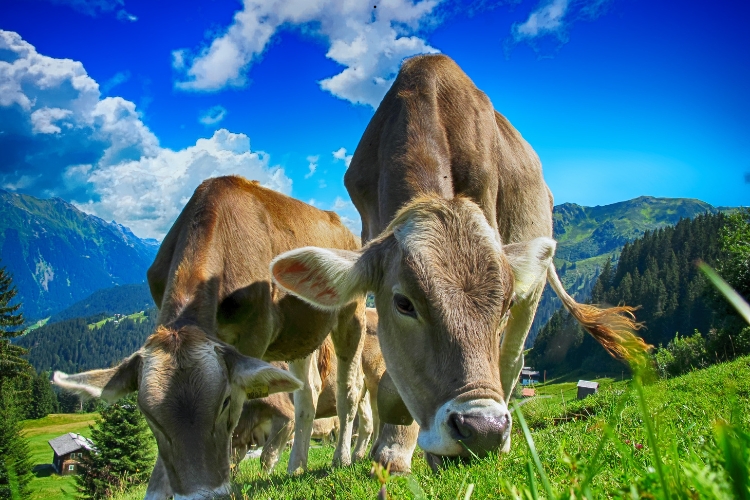
2. Environmental Impact
a. Climate Change Mitigation
b. Biodiversity Preservation
Organic dairy farming avoids the use of synthetic pesticides, herbicides, and genetically modified organisms (GMOs), which can harm beneficial insects, soil organisms, and wildlife, leading to declines in biodiversity. By supporting organic dairy products, consumers contribute to farming methods that prioritize the conservation of natural ecosystems.
c. Conserving Soil and Water
Organic dairy farmers utilize practices such as crop rotation, cover cropping, and composting to build soil fertility and structure, reduce erosion, and minimize nutrient runoff into water bodies. By avoiding synthetic fertilizers and pesticides, organic dairy farming helps to protect soil microbial communities and maintain soil health. Organic dairy farms also often implement water conservation measures, contributing to the overall conservation of water resources.
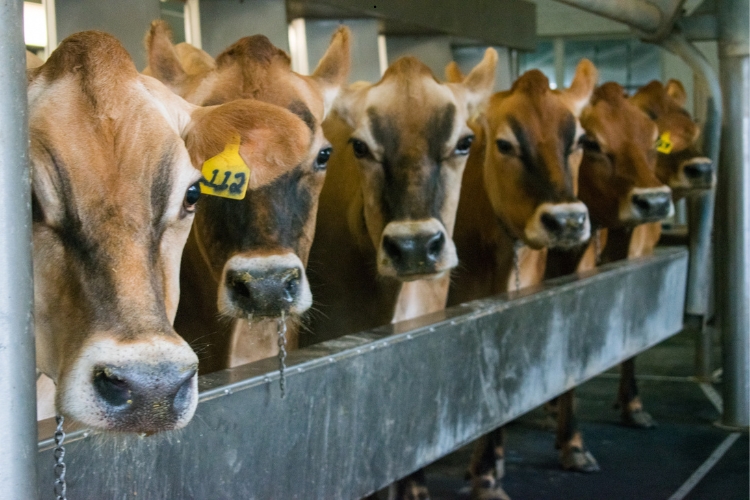
3. Animal Welfare
a. Pasture Access and Natural Behavior
One of the key principles of organic dairy farming is providing dairy cows with access to pasture and outdoor grazing. Organic dairy cows are required to graze on pasture whenever possible. Access to fresh grass and forage fulfills their natural grazing behavior, provides essential nutrients, and promotes exercise, contributing to better overall health and well-being. In contrast, conventional dairy cows may be confined to indoor feedlots or barns for most of their lives.
b. Prohibition of Confinement
Organic dairy standards prohibit the use of confinement and restrictive housing systems for dairy cows. This means that cows raised on organic farms are not kept in overcrowded or restrictive environments. Instead, organic dairy farmers must provide spacious and comfortable housing that allows cows to move freely, lie down, and exhibit natural behaviors.
c. Humane Treatment
Organic dairy farming emphasizes humane treatment and animal well-being. Organic farmers must provide appropriate veterinary care, nutrition, and living conditions. They often implement low-stress handling techniques and behavioral enrichment practices to promote positive interactions between humans and animals.
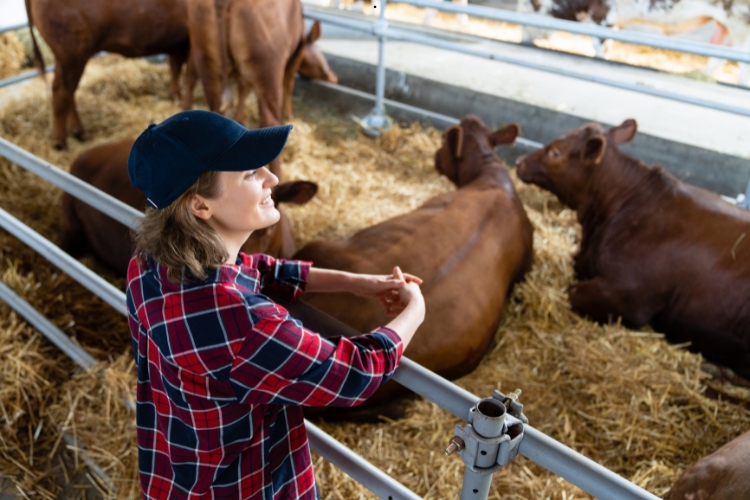
4. Ethical Considerations
a. Animal Welfare Commitment
Organic dairy farming upholds rigorous animal welfare standards, ensuring humane treatment and prioritizing the well-being of dairy cows. This commitment includes providing access to pasture for grazing, avoiding confinement, and offering proper veterinary care and nutrition.
b. Transparency
Transparency is a fundamental principle of organic dairy farming. Organic dairy farmers must maintain detailed records of their farming practices. By providing access to this information, consumers can gain insights into how their food is produced and verify that ethical and sustainable practices are being followed.
c. Fair Treatment
Organic dairy farming prioritizes fair treatment and safe working conditions for farm workers. This includes ensuring fair wages, providing access to healthcare, and fostering a supportive work environment.
d. Community Respect
Organic dairy farming recognizes the importance of respecting local communities and indigenous rights. Farmers engage with local stakeholders to understand their needs and concerns and minimize the impact of farming activities on the environment and communities.
e. Sustainable Land Management
Organic dairy farming embraces principles aimed at minimizing environmental impact and promoting sustainable land management practices. These principles include avoiding synthetic pesticides and fertilizers, conserving soil health, and promoting biodiversity.
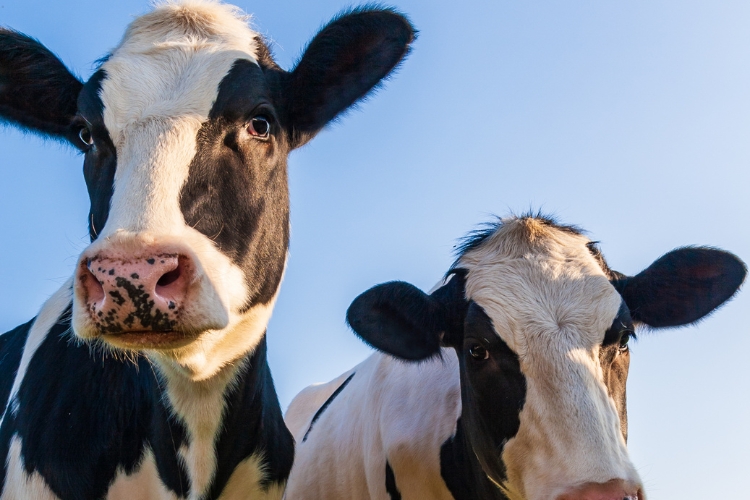
5. Economic Benefits
a. Job Creation and Economic Growth
The organic dairy sector provides economic opportunities in rural communities. For example, in Vermont, 180 organic dairy farms contribute $76 million in output, 1,009 jobs, $34 million in gross state product, and $26 million in labor income to the state economy. In Minnesota, 114 organic dairy farms contribute $78 million in output, 660 jobs, $32 million in gross state product, and $21 million in labor income.
b. Greater Economic Impact Than Conventional
Studies have shown that increased sales from organic dairy farms lead to greater positive economic impacts compared to equivalent sales from conventional dairy farms. For instance, in Vermont, an increase in sales revenue to organic dairy farms results in an 83 percent increase in employment compared to an equivalent increase for conventional dairy farms. In Minnesota, the increase in employment is 14 percent greater for the organic sector.

Addressing the Challenges and Supporting Organic Dairy
While organic dairy farming offers numerous benefits, there are also challenges that need to be addressed to support the growth and sustainability of this sector.
1. Policy Recommendations
a. Reforming Minimum Pricing Orders
Federal Milk Marketing Orders (FMMOs) establish minimum prices that dairy processors pay to farmers. These orders were established before the organic sector existed and do not distinguish between organic and conventional milk. This can be disadvantageous for organic producers because organic milk prices are generally set independently of FMMOs at higher levels. The USDA should revise FMMOs to be more effective for organic producers, processors, and consumers.
b. Tailoring Risk Management Programs
Existing risk management programs are designed for conventional milk market conditions and may not be effective for organic dairy farms. For example, the price that organic dairy farms receive for their milk is set by long-term contracts, meaning they cannot increase prices during periods of high input costs. Risk management programs should be customized to reflect the specific market conditions of organic dairy.
c. Funding for Organic Agriculture
Congress should maintain or increase funding for programs that support organic agriculture, such as the organic cost-share certification program and research programs on organic production systems.
d. Promoting Regional Food Systems
Congress should fund, and the USDA should implement, programs that support regional food-system development. These programs could help the organic dairy sector by providing grants and promoting farm-to-school programs.
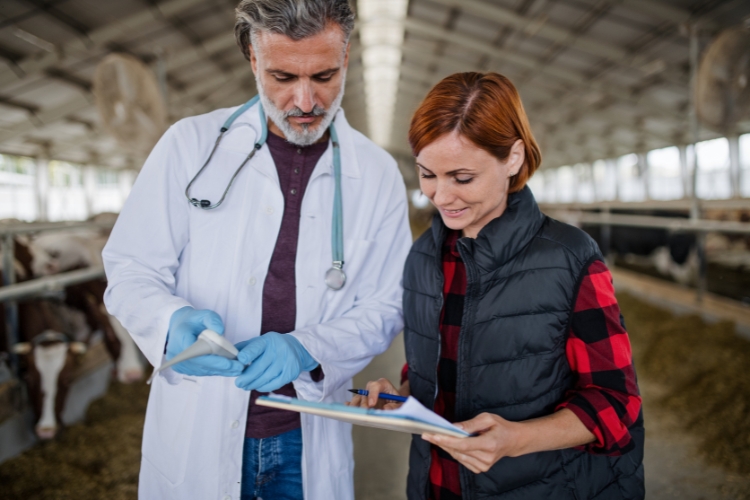
Technological Solutions for Organic Dairy
1. The Role of Technology
Technology solutions can play a crucial role in tracking organic dairy practices, and enhancing transparency and consumer trust.
2. Specific Applications
a. Data Collection and Monitoring
Technology allows farmers to digitally record and store information about their organic practices, enabling real-time monitoring and detection of any deviations from organic standards.
b. Traceability
Technology facilitates the traceability of organic dairy products throughout the supply chain, ensuring transparency and allowing consumers to verify the authenticity of organic claims. Blockchain traceability solutions, such as those offered by TraceX, can enhance transparency and consumer trust.
c. Compliance Management
Automated compliance management systems help farmers adhere to organic certification requirements.
d. Performance Analysis
Data analytics tools allow farmers to analyze key performance metrics related to organic dairy production, enabling continuous improvement of farming practices.
Conclusion
Organic dairy farming offers a holistic approach to dairy production, benefiting human health, environmental sustainability, animal welfare, ethical practices, and economic viability. As consumers increasingly seek out organic and sustainable options, organic dairy farming is poised to create a more resilient and equitable food system.
By addressing the challenges and leveraging technological solutions, the organic dairy sector can continue to grow and provide a compelling alternative to conventional dairy farming.
Table: Economic Impact of Organic Dairy Farms
| State | Output | Jobs | Gross State Product | Labor Income |
|---|---|---|---|---|
| Vermont | $76 million | 1,009 | $34 million | $26 million |
| Minnesota | $78 million | 660 | $32 million | $21 million |
FAQs
1. What are the nutritional benefits of organic dairy products?
Organic dairy products, such as milk, cheese, and yogurt, have been found to contain higher levels of beneficial nutrients like omega-3 fatty acids, antioxidants, and vitamins compared to conventional dairy products. This is largely due to the organic cows’ diet, which typically includes more grass and forage. Consuming organic dairy can provide consumers with a more nutrient-dense option.
2. How does organic dairy farming benefit the environment?
Organic dairy farming practices help mitigate climate change by sequestering carbon in the soil through pasture-based systems and reducing reliance on energy-intensive inputs like synthetic fertilizers. Additionally, organic farming avoids the use of harmful pesticides and promotes biodiversity conservation, while also helping to conserve soil and water resources.
3. What are the animal welfare standards in organic dairy farming?
Organic dairy farming places a strong emphasis on animal welfare. Organic standards require dairy cows to have access to pasture and outdoor grazing, prohibit the use of confinement and restrictive housing, and mandate the provision of appropriate veterinary care, nutrition, and low-stress handling practices. This ensures the cows can exhibit their natural behaviors and maintain good overall health and well-being.
4. How does organic dairy farming benefit local communities and the economy?
Organic dairy farming provides significant economic opportunities in rural communities. Studies have shown that organic dairy farms generate more jobs and economic output compared to conventional dairy farms of equivalent size. Additionally, the organic dairy sector supports fair treatment of farm workers and respects the needs of local communities and indigenous rights, contributing to a more equitable and sustainable food system.
